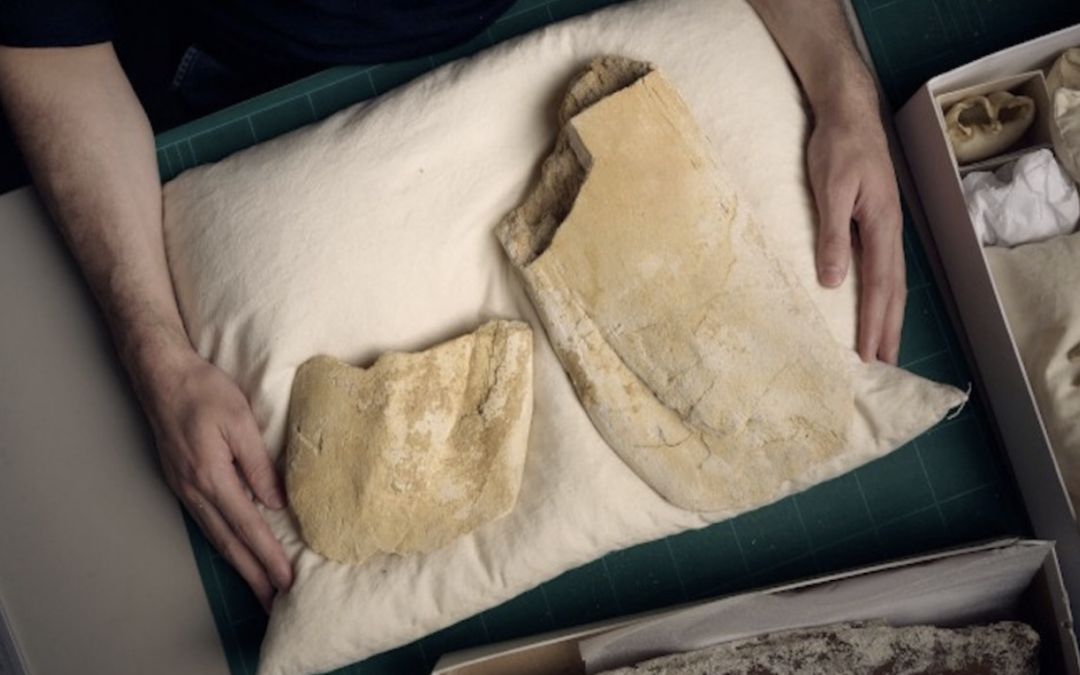A fragmented jawbone found in the Murray River has changed scientists’ understanding of whale evolution.
The whale fossil was discovered on the banks of the Murray River in 1921, and remained in the collections of Museums Victoria for more than a century. However, a recent study of the fossil has revealed that ancient whale species from the Southern Hemisphere were much bigger than previously imagined, measuring up to nine metres long. The location of the fossil also indicates that the giant baleen originated in the Southern Hemisphere, a surprise to many researchers.
Dr James Rule, a researcher at the Natural History Museum in the United Kingdom and lead author of the study, emphasises the importance of these findings on common understandings of whale evolution.
“Though nine metres isn’t large for a whale today, this would have been around 1.5 times as big as the other baleen whales we knew were living at the time,” he explains.
“This fossil reveals that whales in the southern hemisphere were getting larger earlier than expected, upending studies based mostly on fossils from north of the equator.”
Opening image: Jaw fragments © Eugene Hyland/Museums Victoria.

Baleen whales have baleen plates, rather than teeth, which they use to filter feed.
What are baleen whales?
Baleen whales are the largest animals ever identified. Using bristly baleen plates, instead of teeth, the whales collect krill, plankton and small fish from the sea. Baleen is made out of keratin, the same protein that makes human fingernails and hair.
Previous studies of the baleen whale (mysticete) focused primarily on when the marine animals began to grow, rather than where. This is partly because specimens from the Southern Hemisphere account for only 19 per cent of all global mysticete fossil records. However, these fossils appear to be much larger than specimens from the north, meaning any marine mammal fossils from the Southern Hemisphere are invaluable to researchers hoping to understand the evolution of whales.

The jawbone was found in the Murray River, more than 100km inland.
What does the fossil tell us?
The jawbone fossil that has sparked such interest was found more than 100 kilometres inland. Even 19 million years ago when the baleen whale was alive, it would have been a long way from open water, suggesting it may have ended up stranded by accident.
Co-author of the paper, Dr Erich Fitzgerald from Museums Victoria, was unaware of the importance of the fossil until he gave it to Dr Rule for study during his undergraduate degree. Together, they realised that the jawbone belonged to the largest baleen whale to ever exist.
When compared with baleen whale specimens over time, it became clear that while whales from the north have grown over the past five million years, those in the south were getting larger much earlier.
“The Southern Hemisphere and Australia in particular, have always been overlooked as frontiers for fossil whale discovery,” says Dr Fitzgerald.
“Fossil whale finds, like the specimen from the Murray River, are shaking up the evolution of whales into a more accurate, truly global picture of what was going on in the oceans long ago.”
The original paper was published in Proceedings of the Royal Society B journal.
For more amazing scientific discoveries, check out how palaeoconservation is being used to save Australia’s endangered species.

